Look, I get it. The world feels pretty dystopian already, right? Between climate disasters on the news and your phone tracking your every move, reality sometimes feels like we’re already living in one of those cautionary tales. But here’s the thing—reading actual dystopian fiction helps make sense of all this chaos.
According to research from the Science Teachers Association, dystopian fiction has become increasingly popular among readers because it “provides a platform for them to delve on societal and moral issues” while offering hope despite seemingly dire circumstances (https://www.scisdata.com/connections/issue-123/dystopian-literature-more-than-just-the-end-of-the-world-to-teens/). I picked up “The Hunger Games” during college thinking it was just another adventure story. Three sleepless nights later, I found myself questioning everything about media manipulation and social inequality. That’s the power of dystopian fiction—it doesn’t just entertain; it transforms how you see the world around you.
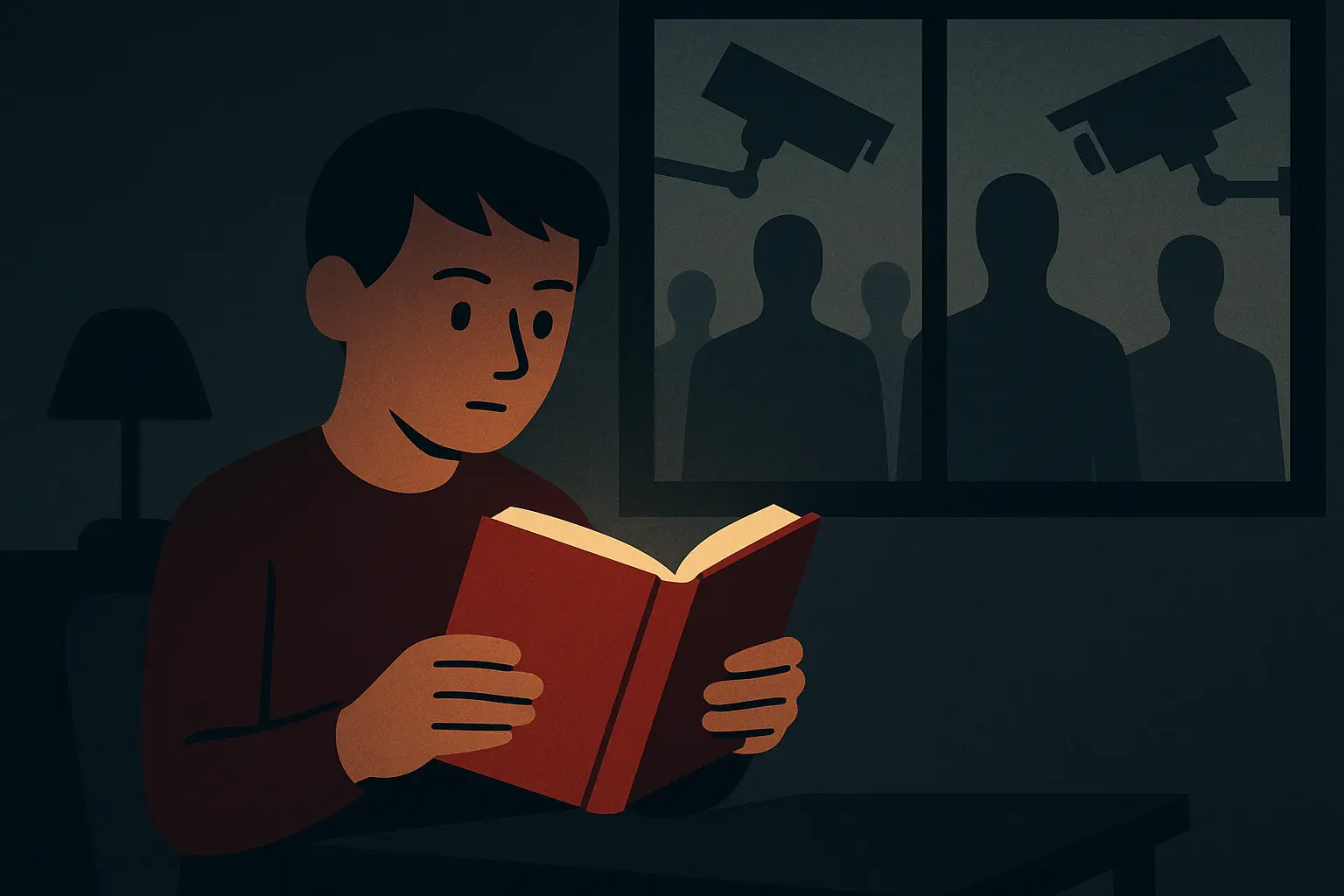
Table of Contents
-
What Makes a Great Dystopian Story Worth Your Time
-
25 Essential Dystopian Stories Across 6 Categories
-
Technological Dystopias
-
Environmental and Climate Dystopias
-
Political and Social Control Dystopias
-
Economic and Class-Based Dystopias
-
Psychological and Identity Dystopias
-
Pandemic and Medical Dystopias
-
-
Deep Dive Analysis of Complex Dystopian Masterpieces
-
How to Apply Selection Criteria to Any Dystopian Story
-
Transform Your Dystopian Reading Into Creative Writing
-
Final Thoughts
TL;DR
-
Six key criteria help identify powerful dystopian stories: thematic relevance, narrative complexity, world-building quality, literary merit, contemporary impact, and accessibility
-
25 essential dystopian stories span technological surveillance, environmental collapse, political control, economic inequality, psychological manipulation, and medical dystopias
-
Contemporary relevance matters most—stories addressing current anxieties about climate change, technology, and social inequality resonate strongest with modern readers
-
Complex narratives that avoid simple good-vs-evil dichotomies offer the most meaningful insights into human nature and societal challenges
-
The best dystopian fiction balances entertainment with intellectual substance, making difficult topics accessible without sacrificing depth
-
These stories serve as both warnings about potential futures and reflections of current societal problems, encouraging critical thinking about our world
What Makes a Great Dystopian Story Worth Your Time
Want to know my secret for finding dystopian books that’ll actually stick with you? I’ve got a little mental checklist I run through when I’m browsing for my next dystopian read. First: Does this remind me of something I saw in the news this week? If yes, we’re onto something. Second: Are the ‘bad guys’ people I could maybe understand, even if I hate what they’re doing? Complex villains make for better stories. Third: Could I explain this world to my mom without her eyes glazing over? If it’s too weird or complicated, it probably won’t land.
|
Criteria |
High Quality Example |
Medium Quality Example |
Low Quality Example |
|---|---|---|---|
|
Thematic Relevance |
“The Circle” – directly addresses social media surveillance concerns |
“Ready Player One” – explores digital escapism themes |
Generic zombie apocalypse – no clear social commentary |
|
Narrative Complexity |
“Never Let Me Go” – gradual revelation with moral ambiguity |
“The Hunger Games” – clear heroes vs villains with some nuance |
Simple good vs evil with obvious villains |
|
World-Building Quality |
“The Handmaid’s Tale” – logical progression from current society |
“Station Eleven” – realistic post-pandemic reconstruction |
Arbitrary rules with no historical context |
|
Literary Merit |
“The Road” – Pulitzer Prize-winning prose and character development |
“Divergent” – engaging plot with adequate writing |
Poor character development and clichéd dialogue |
|
Contemporary Impact |
“1984” – vocabulary still used in political discourse |
“Black Mirror” episodes – influence tech industry discussions |
No cultural influence beyond entertainment |
|
Accessibility |
“Fahrenheit 451” – complex themes in readable format |
“Brave New World” – philosophical but approachable |
Either too simplistic or needlessly obscure |
Thematic Relevance That Actually Matters Right Now
The most powerful dystopian stories address anxieties you’re already feeling. Climate change fears, technological surveillance concerns, political polarization—these aren’t distant possibilities anymore. They’re happening right now. When you pick up a dystopian novel that mirrors your daily news feed, you’re not just reading fiction; you’re exploring potential solutions and consequences for real problems.
I picked up “The Circle” thinking it was just another tech thriller. Three chapters in, I was frantically checking my privacy settings and wondering if my smart TV was judging my Netflix choices. That’s when you know a dystopian story is doing its job.
Narrative Complexity That Makes You Think
Skip the stories where heroes wear white hats and villains twirl mustaches. Great dystopian fiction presents morally complex situations where good people make terrible choices and oppressive systems arise from understandable motivations. You want characters who face impossible decisions, forcing you to question what you’d do in their position.
Consider how “The Handmaid’s Tale” presents Aunt Lydia, who genuinely believes she’s protecting women by enforcing Gilead’s oppressive rules. She’s not a cartoonish villain but a complex character whose twisted logic makes her more terrifying than any mustache-twirling antagonist. This complexity forces you to examine how ordinary people can become complicit in oppressive systems.
World-Building That Feels Uncomfortably Real
The best dystopian societies don’t feel alien—they feel like logical extensions of current trends. When an author creates a world that makes you think “this could actually happen,” they’ve achieved something special. These stories work because they show how ordinary people might gradually accept extraordinary circumstances.
Remember how weird it felt when everyone suddenly became okay with QR codes for everything during COVID? That’s exactly the kind of gradual acceptance that makes dystopian fiction so terrifying—and so believable.
Literary Merit That Doesn’t Feel Like Homework
Dystopian fiction shouldn’t sacrifice storytelling quality for social commentary. You deserve prose that flows, characters who feel real, and plots that grip you. The message becomes more powerful when it’s delivered through exceptional writing rather than heavy-handed preaching.
Contemporary Impact That Changes Real Conversations
Some dystopian stories transcend literature to become cultural touchstones. They provide vocabulary for discussing current events and frameworks for understanding complex social issues. When politicians reference “1984” or protesters carry “Handmaid’s Tale” signs, you’re seeing dystopian fiction’s real-world power.
Sure, “1984” predicted surveillance states, but did Orwell see TikTok coming? Because honestly, we’re voluntarily filming ourselves doing dances for an algorithm. Big Brother is probably confused why he even needed to try so hard.

Accessibility That Welcomes Everyone
The most important dystopian stories balance intellectual depth with readability. You shouldn’t need a literature degree to understand why a story matters, but you should find new layers of meaning with each reading. Great dystopian fiction invites both casual readers and scholars to engage meaningfully with its themes.
25 Essential Dystopian Stories Across 6 Categories
Alright, let’s dive into the good stuff. I’ve organized these 25 stories into six categories that cover pretty much every way society can go sideways. From AI taking over to the planet literally burning, these stories explore different flavors of “how things could go wrong”—and sometimes, how we might make them right.
Technological Dystopias
These five stories explore how our beloved gadgets might turn against us. From social media manipulation to AI consciousness, these narratives examine the double-edged nature of technological progress and its potential to both liberate and oppress humanity.
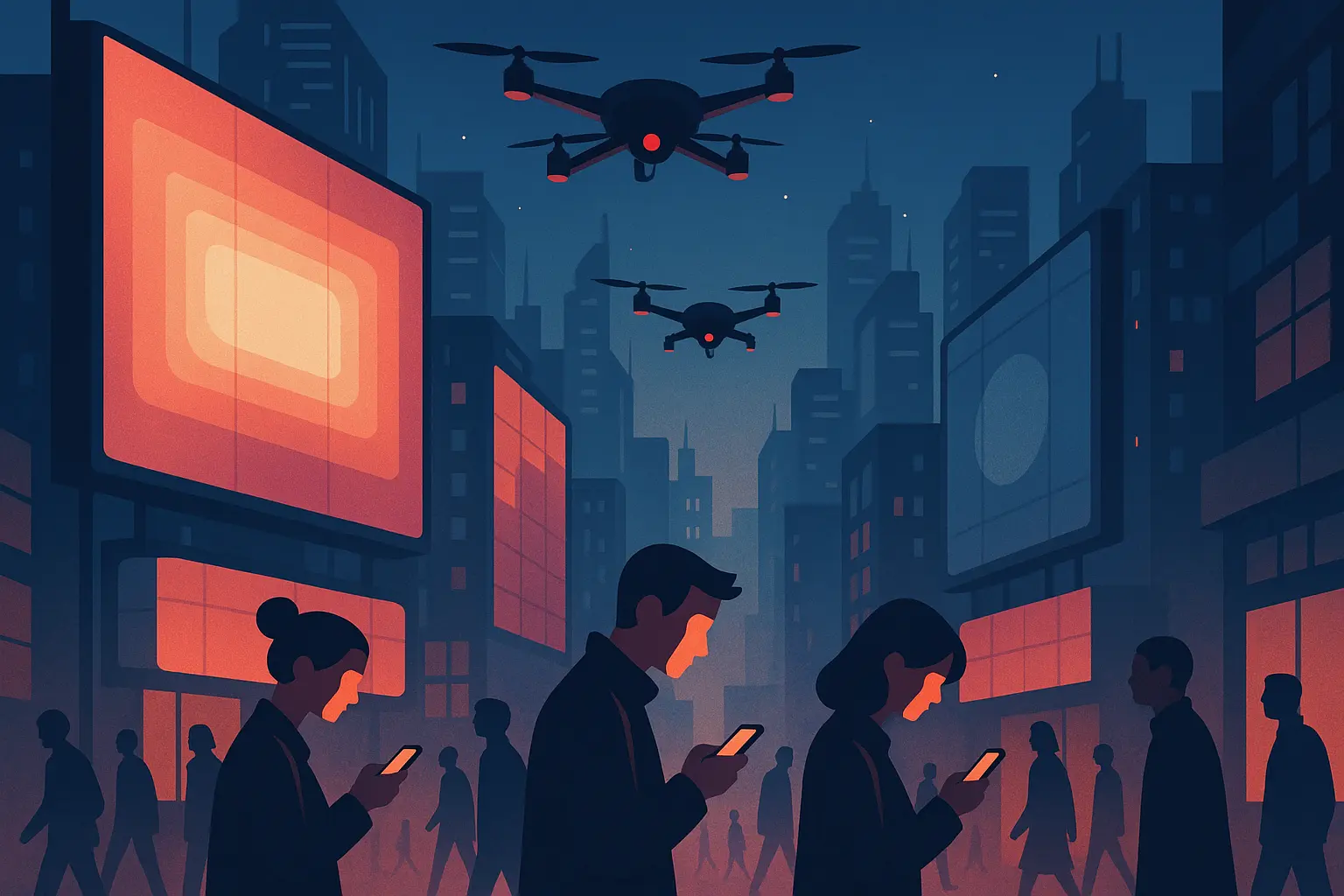
1. “The Circle” by Dave Eggers
Social media surveillance reaches its logical extreme in this chilling examination of privacy erosion. Mae Holland joins a tech company that consolidates all online activity, gradually eliminating personal boundaries under the guise of transparency and connection. It’s basically what happens when Facebook, Google, and your worst privacy nightmares have a baby.
2. “Klara and the Sun” by Kazuo Ishiguro
An artificial friend’s perspective reveals a world where AI companions replace human relationships. Klara’s observations expose how technology might fill emotional voids while raising questions about authentic connection and what makes us truly human. Fair warning: you’ll never look at Siri the same way again.
3. “The Power” by Naomi Alderman
Women develop the ability to generate electrical shocks, completely restructuring global power dynamics. This gender-flipped dystopia explores how quickly societies can transform when fundamental power balances shift. It’s like asking “what if the patriarchy, but reversed?”—and the answer is more complicated than you’d think.
4. “Station Eleven” by Emily St. John Mandel
A flu pandemic collapses technological civilization, leaving survivors to rebuild culture from fragments. Rather than focusing on survival horror, this story examines what aspects of human creativity and connection survive catastrophe. Spoiler alert: Shakespeare makes it through the apocalypse.
5. “Recursion” by Blake Crouch
Memory manipulation technology makes reality malleable, questioning the nature of time and identity. Characters struggle with false memories and alternate timelines, exploring how our sense of self depends on consistent personal history. It’s like “Inception” but somehow even more confusing.
Environmental and Climate Dystopias
Climate dystopias hit different now, don’t they? These four powerful narratives confront the reality of environmental collapse and climate change, ranging from post-apocalyptic wastelands to flooded cities that examine how environmental destruction reshapes human civilization.
6. “The Road” by Cormac McCarthy
A father and son traverse a post-apocalyptic wasteland stripped of environmental life. This Pulitzer Prize winner strips away civilization to examine fundamental questions about human nature, parental responsibility, and moral survival. It’s bleak, but in a beautiful way that’ll haunt you for weeks.
7. “Parable of the Sower” by Octavia Butler
Climate change and social collapse create extreme inequality and violence in 2025 America. Lauren develops a new religion called “Earthseed” that emphasizes adaptability, offering hope through acceptance of change rather than resistance to it. Butler wrote this in 1993 about 2025, and honestly, she nailed it so hard it’s scary.
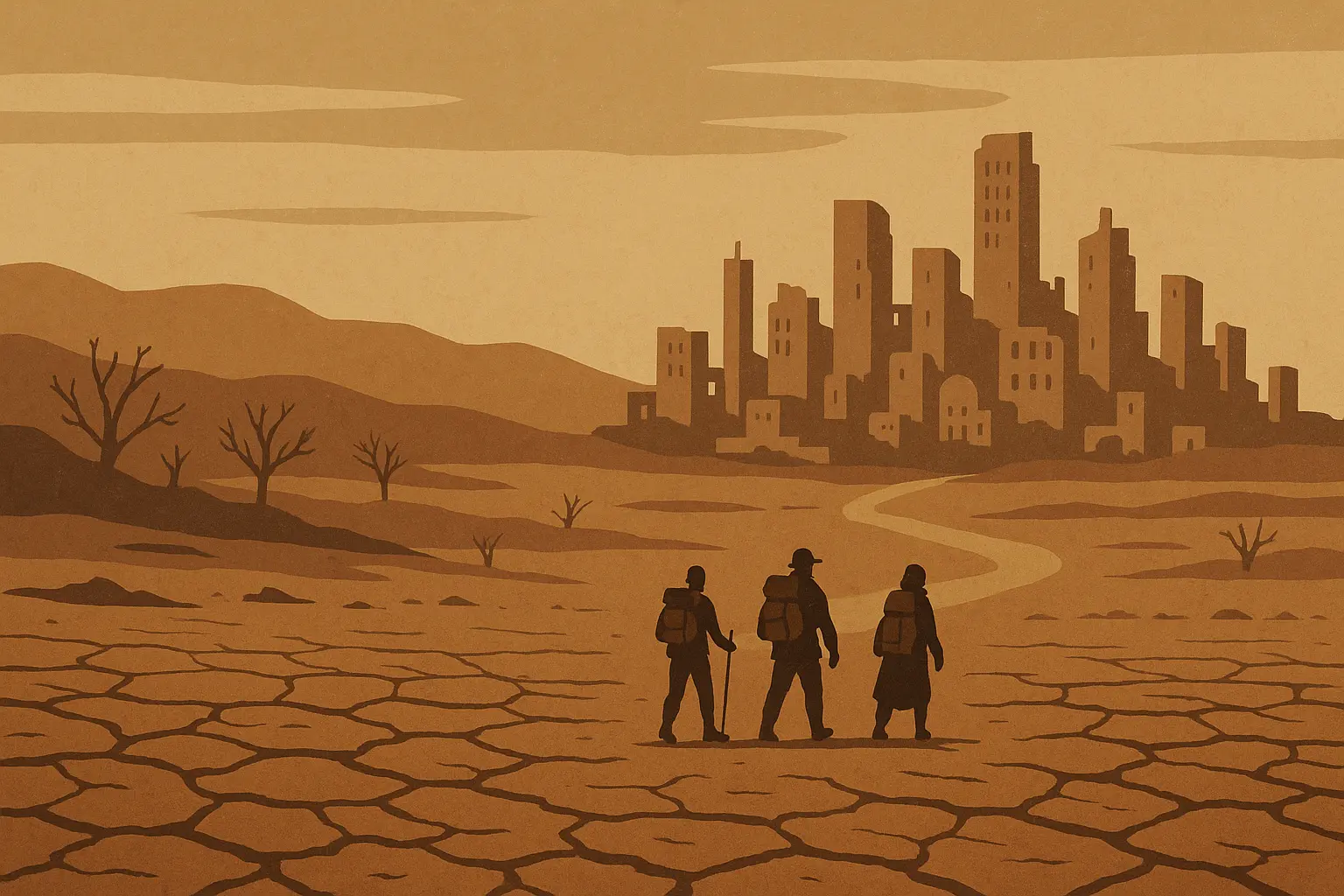
8. “The Water Knife” by Paolo Bacigalupi
Water scarcity drives brutal conflict in the American Southwest. This near-future thriller explores how resource depletion creates new forms of warfare and social stratification, making water more valuable than oil. Bacigalupi wrote about water wars in the Southwest, and now we’re watching Lake Mead disappear.
9. “New York 2140” by Kim Stanley Robinson
Manhattan becomes a Venice-like city after sea level rise, with canals replacing streets. Multiple characters navigate this transformed world, showing how cities might adapt rather than simply collapse under climate pressure. It’s surprisingly hopeful for a book about New York being underwater.
Political and Social Control Dystopias
These five foundational works examine how governments and institutions control populations through surveillance, censorship, and social manipulation. Among the best dystopian novels ever written, these stories continue influencing political discourse decades after publication—and honestly, they feel more relevant every year.
10. “1984” by George Orwell
The ultimate examination of totalitarian surveillance and thought control. Winston Smith’s struggle against Big Brother established the template for political dystopias, introducing concepts that remain relevant in discussions of government overreach. Every time someone says “Big Brother is watching,” they’re referencing this book.
11. “The Handmaid’s Tale” by Margaret Atwood
Religious fundamentalism creates a society where women’s bodies are controlled by the state. Offred’s experience in Gilead gains power through historical grounding—every element has occurred somewhere in human history. Recent political developments around reproductive rights have made this story feel urgently contemporary.
12. “Fahrenheit 451” by Ray Bradbury
Books are banned and burned in a society prioritizing entertainment over knowledge. Guy Montag’s transformation from book-burner to book-protector explores the importance of intellectual curiosity in maintaining democratic society. It’s not just about burning books—it’s about burning the desire to think critically.
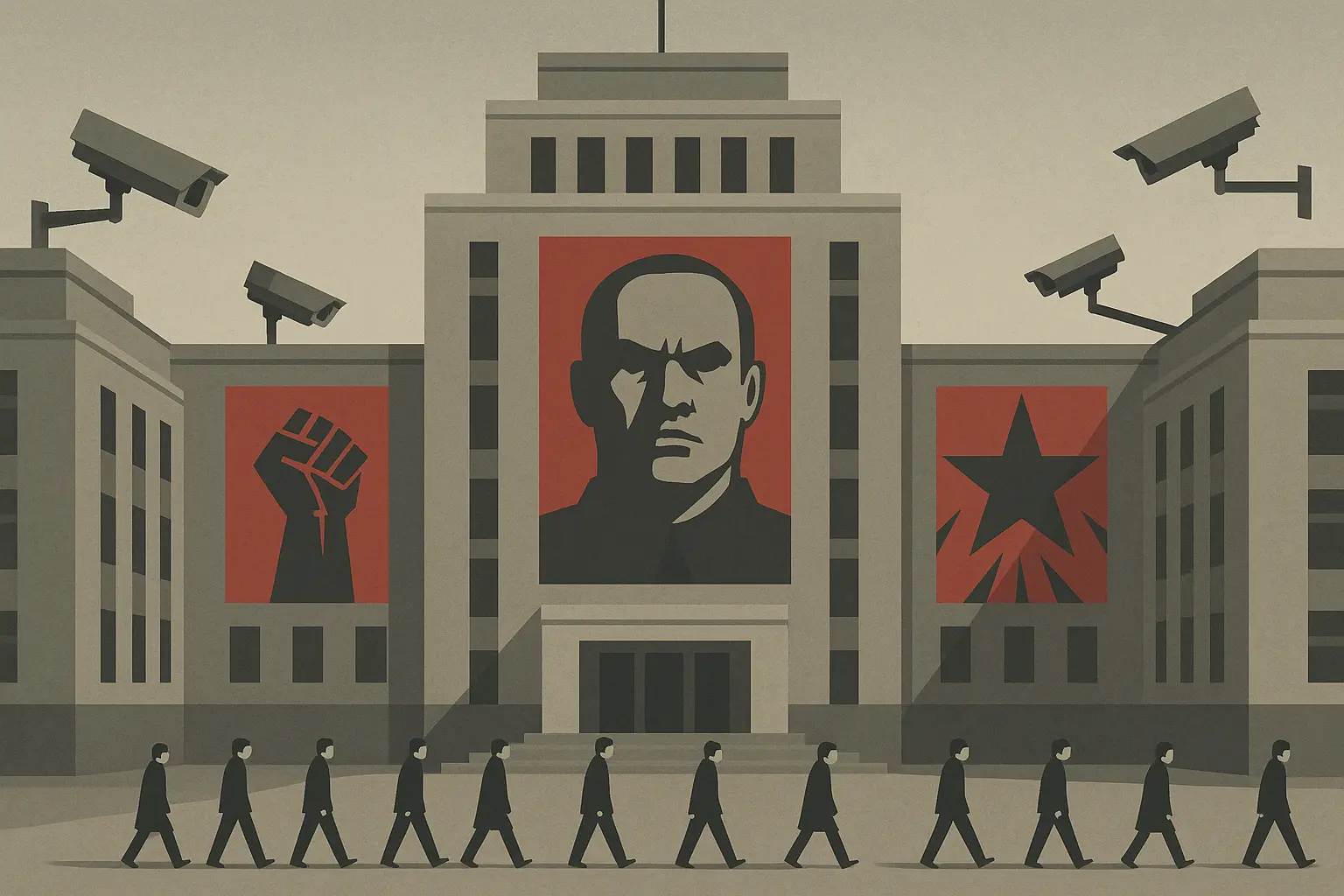
13. “The Giver” by Lois Lowry
A seemingly perfect society eliminates pain, conflict, and choice—along with genuine emotion. Jonas discovers the cost of this stability when he becomes the community’s memory keeper, learning what they’ve sacrificed for peace. It’s like asking “what if we eliminated all suffering?” and discovering the answer is terrifying.
14. “Never Let Me Go” by Kazuo Ishiguro
A boarding school harbors a dark secret about its students’ predetermined fate. This subtle dystopia reveals its horrors gradually, exploring themes of acceptance, rebellion, and what makes life worth living. I literally had to put this book down and stare at the wall for ten minutes when I figured out what was really happening.
Economic and Class-Based Dystopias
These four stories examine how economic inequality and class divisions create dystopian societies. From televised death matches to corporate food control, these narratives explore how wealth concentration and resource scarcity reshape human relationships and social structures.
15. “The Hunger Games” by Suzanne Collins
Extreme wealth inequality manifests in televised fights to the death between districts. Katniss Everdeen’s rebellion against the Capitol explores how entertainment can mask oppression and how individual acts of defiance can spark revolution. It’s reality TV taken to its most horrifying logical conclusion.
The story demonstrates how entertainment can mask systemic oppression. The Capitol citizens view the Games as thrilling spectacle while remaining blind to the underlying brutality. This mirrors how modern audiences might consume reality TV or social media content without considering the exploitation involved in its production.
16. “Ready Player One” by Ernest Cline
Virtual reality becomes an escape from economic collapse and environmental degradation. Wade Watts’ quest in the OASIS raises questions about digital escapism versus engagement with real-world problems. It’s basically what happens when the real world gets so awful that everyone would rather live in a video game.
17. “The Windup Girl” by Paolo Bacigalupi
Corporate control over food production creates genetic manipulation and scarcity. This biopunk novel explores how companies might control populations through biological dependence rather than traditional force. It’s like Monsanto’s worst-case scenario come to life.
18. “Snowpiercer” by Jacques Lob
Class warfare erupts on a train carrying humanity’s survivors through a frozen world. The train’s rigid car-based hierarchy serves as a confined laboratory for examining revolution, resource distribution, and social mobility. It’s “class struggle” made literal.
Psychological and Identity Dystopias
These four narratives explore how societies might control populations through psychological manipulation and identity suppression. These stories examine the relationship between individual consciousness and collective conformity, questioning what makes us uniquely human.
19. “Brave New World” by Aldous Huxley
Genetic engineering and psychological conditioning create a society without suffering—or authentic experience. Bernard Marx and John the Savage challenge this system, exploring whether happiness without struggle has any meaning. It’s like asking “what if we could eliminate all discomfort?” and discovering that might eliminate everything worthwhile too.
20. “We” by Yevgeny Zamyatin
Individual identity is suppressed in favor of collective uniformity in a glass-walled society. D-503’s rebellion against the One State established many dystopian tropes later used by Orwell and Huxley. This book basically wrote the playbook for totalitarian dystopias.
21. “The Left Hand of Darkness” by Ursula K. Le Guin
A world where gender is fluid challenges assumptions about identity and society. Genly Ai’s mission to the planet Gethen explores how gender shapes culture, politics, and personal relationships. Le Guin doesn’t just reverse gender roles—she imagines something entirely different.
22. “Flowers for Algernon” by Daniel Keyes
Intelligence enhancement reveals society’s cruelty toward those deemed “different.” Charlie Gordon’s journey from intellectual disability to genius and back again exposes how we treat people based on cognitive ability. It’ll break your heart in the best possible way.
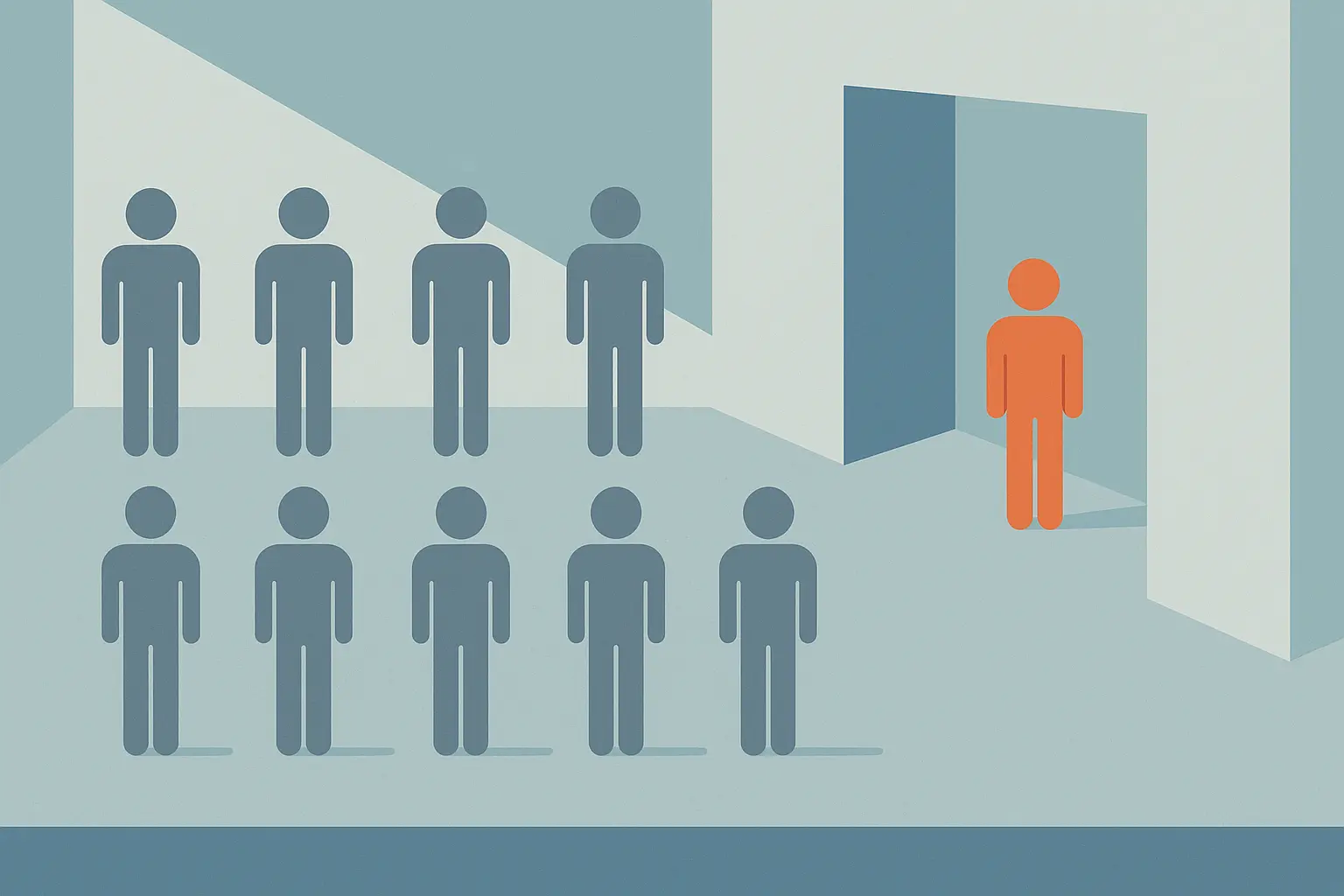
Pandemic and Medical Dystopias
Look, pandemic dystopias were a lot more fun to read before we actually lived through one. These three stories examine how medical crises and biological threats reshape civilization, exploring humanity’s vulnerability to biological catastrophe and the ethical implications of medical advancement.
23. “The Stand” by Stephen King
A superflu pandemic decimates humanity, leading to a battle between good and evil survivors. This epic explores how quickly institutions collapse under biological pressure and how communities form after civilization’s end. King wrote about disease breaking down society, and here’s what he got right: it’s not the virus that gets you—it’s losing the things that make life worth living.
24. “Oryx and Crake” by Margaret Atwood
Genetic engineering and corporate greed lead to humanity’s near-extinction. Snowman may be the last natural human alive, reflecting on how scientific advancement without ethical constraints can destroy what it seeks to improve. It’s like asking “what could go wrong with genetic engineering?” and getting a very detailed answer.
25. “The Children of Men” by P.D. James
Human infertility threatens species extinction in a world losing hope for the future. Theo Faron’s journey with a miraculously pregnant woman explores how societies respond when facing their own obsolescence. It’s about what happens when humanity literally has no future—until maybe it does.
Deep Dive Analysis of Complex Dystopian Masterpieces
Okay, let me break down why these five books absolutely wrecked me (in the best way). These aren’t just good dystopian stories—they’re the ones that’ll stick with you long after you’ve finished reading, making you question everything from your social media habits to your climate anxiety.
|
Story |
Publication Year |
Primary Warning |
Contemporary Relevance |
Key Innovation |
|---|---|---|---|---|
|
“The Circle” |
2013 |
Tech surveillance overreach |
Social media data collection, privacy erosion |
Shows gradual normalization of surveillance |
|
“Parable of the Sower” |
1993 |
Climate/social collapse |
Rising inequality, climate refugees |
Religion as adaptive response to crisis |
|
“The Handmaid’s Tale” |
1985 |
Reproductive authoritarianism |
Abortion rights debates, religious extremism |
Historical grounding makes horrors believable |
|
“Ready Player One” |
2011 |
Digital escapism from reality |
VR/metaverse development, economic inequality |
Questions whether virtual worlds solve problems |
|
“Station Eleven” |
2014 |
Pandemic civilization collapse |
COVID-19 experience, cultural preservation |
Focus on what makes survival meaningful |
“The Circle” – When Your Privacy Settings Don’t Matter Anymore
Dave Eggers basically predicted how we’d all become willing participants in our own surveillance. Mae Holland’s journey from enthusiastic employee to reluctant participant in total surveillance mirrors how many of us gradually accepted digital monitoring in exchange for convenience.
The novel’s power lies in its realistic progression. The Circle doesn’t impose surveillance through force—it makes transparency seem desirable, even moral. Mae’s colleagues genuinely believe they’re creating a better world by eliminating privacy. Sound familiar? Consider how COVID-19 accelerated digital tracking acceptance. Contact tracing, vaccine passports, and remote monitoring became normal almost overnight.
“Parable of the Sower” – Climate Fiction That Predicted Our Present
Butler wrote this in 1993 about 2025, and honestly, she nailed it so hard it’s scary. Climate refugees, gated communities, everything falling apart while rich people pretend it’s fine. Lauren Olamina’s development of “Earthseed” religion offers a unique response to apocalyptic circumstances—instead of trying to restore the past or escape to utopia, she embraces change as the fundamental nature of existence.
Reading it now feels less like science fiction and more like documentary footage from a future that’s already arriving. Butler’s prescience extends beyond environmental collapse to social fragmentation, private security forces, corporate towns, and government breakdown.
“The Handmaid’s Tale” – When Fiction Becomes Protest Gear
Atwood’s masterpiece gains power through its historical grounding. Every element of Gilead—from reproductive control to religious justification for oppression—has occurred somewhere in human history. Atwood didn’t invent these horrors; she combined them into a single, terrifying system.
The novel has become visual shorthand for reproductive rights activism. Those distinctive red robes and white bonnets appear at protests worldwide, demonstrating how dystopian imagery can mobilize political action. When politicians reference “Handmaid’s Tale” scenarios, they’re acknowledging how fiction can illuminate real political dangers.
“Ready Player One” – Virtual Reality as the Ultimate Escape Room
Cline’s novel presents a world where economic collapse and environmental degradation drive people into virtual reality. The OASIS becomes more appealing than reality, raising crucial questions about escapism versus engagement with real-world problems.
Wade Watts’ obsession with 1980s pop culture reflects how nostalgia can become a form of paralysis. The story’s relevance has only increased as virtual and augmented reality technologies advance. Facebook’s rebranding to Meta explicitly embraces the metaverse concept Cline explored.
“Station Eleven” – Finding Beauty After Everything Falls Apart
If you’re the type who stayed up way too late doomscrolling during the pandemic, “Station Eleven” will hit different. Fair warning: you might ugly cry, but in a good way. Mandel’s novel follows multiple characters before, during, and after a flu pandemic that collapses civilization.
The Traveling Symphony’s motto—”survival is insufficient”—captures the novel’s central theme. Physical survival isn’t enough; humans need art, beauty, and connection to make life meaningful. COVID-19 gave this story new relevance and poignancy, especially Mandel’s emphasis on what we truly miss when it’s gone—live performances, casual human contact, shared cultural experiences.
How to Apply Selection Criteria to Any Dystopian Story
Here’s the thing—once you know what to look for, you’ll never waste time on mediocre dystopian fiction again. This practical framework helps you identify stories that offer genuine value beyond surface-level entertainment, turning you from a passive consumer into an active curator of meaningful literature.
Does This Feel Relevant to What’s Happening Now?
Start by identifying which contemporary issues concern you most. Are you worried about climate change, technological surveillance, political polarization, or economic inequality? The most powerful dystopian stories will address these anxieties directly, offering both warnings and potential insights.
High relevance stories for 2025 include “The Circle” for social media concerns, “Parable of the Sower” for climate anxiety, and “Station Eleven” for post-pandemic reflection. These works feel urgently contemporary because they extrapolate from current trends rather than inventing entirely fictional problems.
Are the Characters Complex Enough That You Can’t Easily Label Them?
Complex dystopian stories avoid simple good-versus-evil frameworks. Look for narratives where sympathetic characters make morally questionable choices, where oppressive systems arise from understandable motivations, and where solutions create new problems.
“Never Let Me Go” exemplifies subtle complexity through its gradual revelation of dystopian elements. Ishiguro never explicitly explains the world’s horrific premise, forcing readers to piece together the truth alongside the characters. When evaluating “Black Mirror” episodes, notice how the best ones avoid simple “technology bad” messages.
Does the World Feel Like It Could Actually Happen?
Effective dystopian worlds feel like logical extensions of current trends rather than arbitrary nightmare scenarios. The best authors show how ordinary people might gradually accept extraordinary circumstances through incremental changes that each seem reasonable in isolation.
“The Handmaid’s Tale” succeeds because Atwood shows how Gilead emerged from recognizable America through economic crisis, fertility decline, and religious extremism. Each restriction builds on previous ones, creating a believable progression from democracy to theocracy.
Is It Well-Written Enough to Keep You Turning Pages?
The most important dystopian stories balance intellectual depth with readability. You shouldn’t need advanced literary training to understand why a story matters, but you should discover new layers of meaning with repeated readings.
“The Hunger Games” achieves this balance by presenting clear allegorical elements while embedding deeper themes about media manipulation, trauma, and the psychology of oppression. Young adult readers can engage with the adventure story while adults recognize sophisticated political commentary.
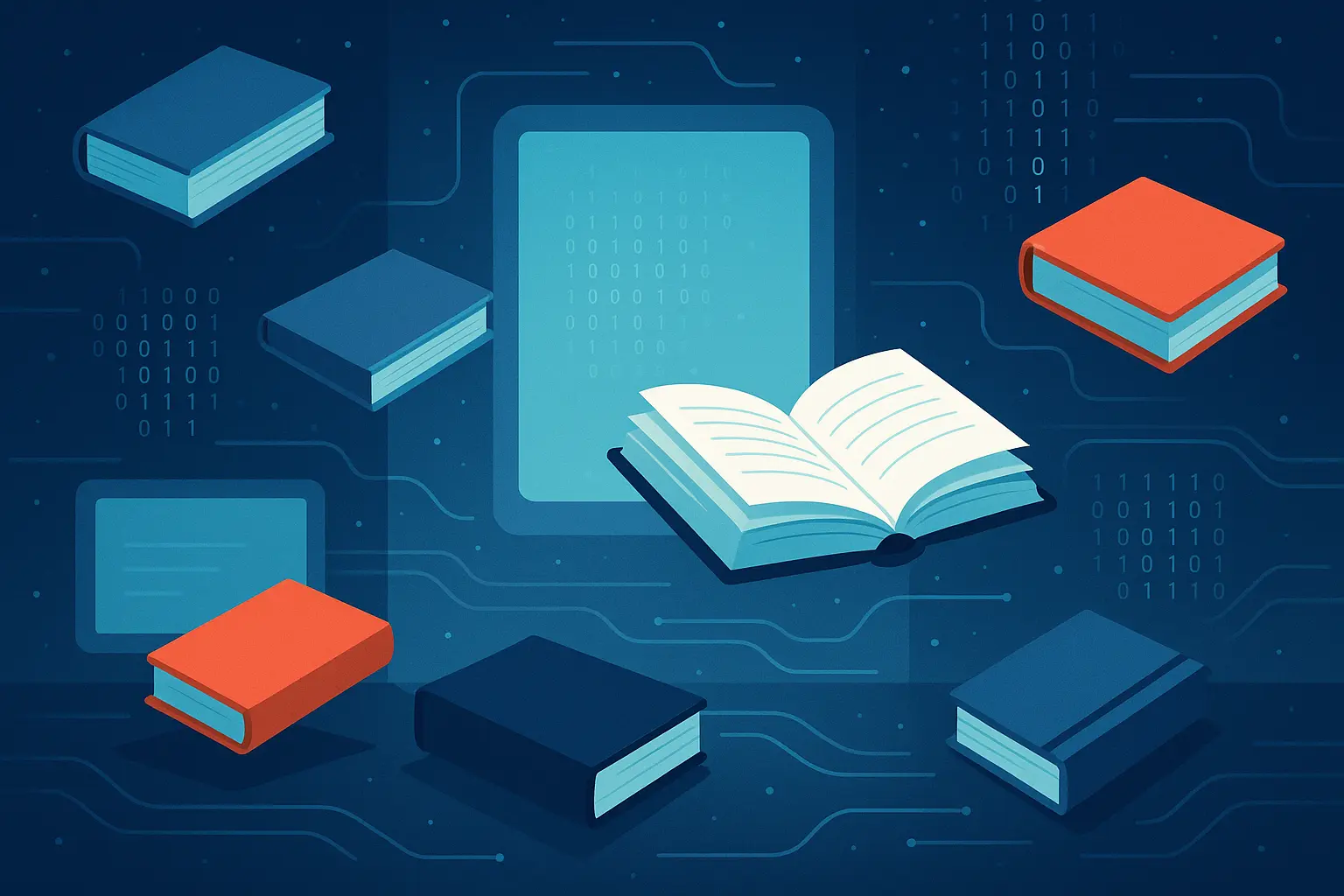
Transform Your Dystopian Reading Into Creative Writing
So maybe all this dystopian reading has you thinking, “Hey, I could write something like this.” Good! The world needs more voices imagining how we might screw things up—and how we might fix them. Here’s the thing though: don’t try to invent some completely wild future society. The best dystopian stories take something that’s already bothering you and just… push it a little further.
From Reading Inspiration to Writing Creation
The dystopian stories we’ve explored demonstrate how effective speculative fiction extrapolates from current trends to imagine possible futures. “The Circle” didn’t invent social media surveillance—it showed where current practices might lead. “Parable of the Sower” didn’t create climate change—it explored how environmental collapse might reshape society.
Your own dystopian writing can follow this same approach. Worried about AI? Don’t write about robot overlords. Write about the job interview where the AI seems a little too interested in your personal life. Concerned about climate change? Don’t write about the day after tomorrow—write about the day after next Tuesday.
For inspiration on developing your dystopian narratives, explore 25 short story examples that demonstrate powerful storytelling techniques applicable to dystopian fiction.
|
Writing Element |
Beginner Approach |
Intermediate Approach |
Advanced Approach |
|---|---|---|---|
|
World-Building |
Modify existing society with one major change |
Create logical progression from current trends |
Develop complex interconnected systems |
|
Character Development |
Clear protagonist vs antagonist roles |
Morally complex characters with mixed motivations |
Multiple perspectives showing system complexity |
|
Theme Exploration |
Single clear message about society |
Multiple interconnected themes and contradictions |
Subtle examination of human nature and power |
|
Narrative Structure |
Linear progression with clear resolution |
Non-linear timeline revealing information gradually |
Multiple storylines across different time periods |
|
Social Commentary |
Direct criticism of current problems |
Metaphorical exploration of contemporary issues |
Nuanced examination of systemic challenges |
Creating Characters Who Feel Like Real People
Your dystopian characters shouldn’t be heroes or villains—they should be people. Real people make terrible choices for good reasons. They compromise their values to protect their families. They go along with bad systems because fighting seems impossible. Think about how you’d actually behave if your world started falling apart. Probably not like an action movie hero, right? That’s your starting point.
Look at how Katniss Everdeen in “The Hunger Games” struggles with the psychological trauma of violence, even when that violence serves a greater good. Or consider how Winston Smith in “1984” ultimately betrays everything he believes in when faced with his deepest fears.
Understanding how to write a story using brain science principles can help you create more compelling dystopian narratives that resonate with readers on a psychological level.
Making Your Dystopian World Feel Uncomfortably Real
Creating believable dystopian societies requires understanding how social, political, and technological systems interact. The most effective dystopian stories show how ordinary people might gradually accept extraordinary circumstances through incremental changes.
When crafting your own dystopian world, focus on internal consistency and logical progression. How did your society reach its current state? What historical events or technological developments made this transformation possible? How do ordinary people justify or resist the system they live within?
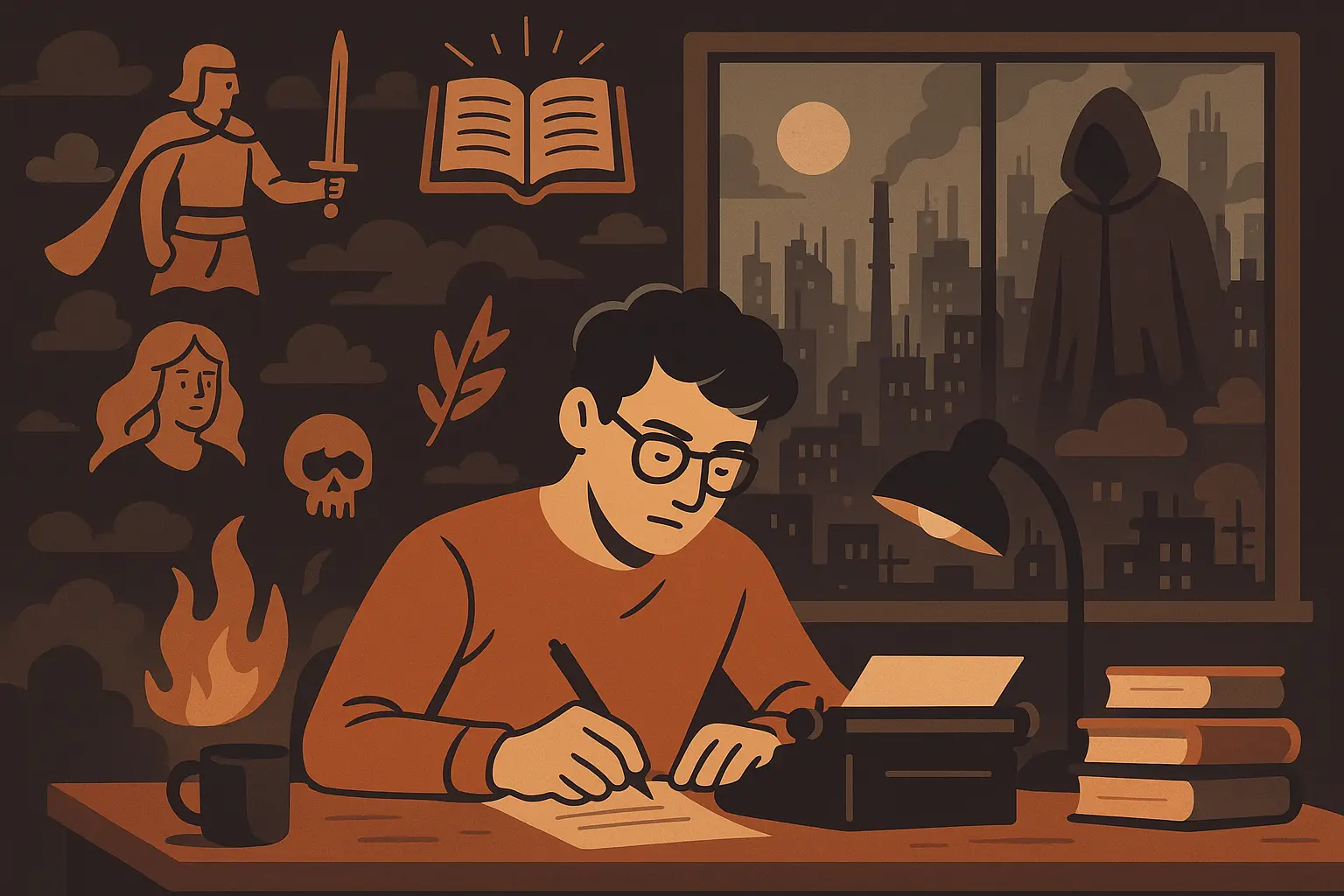
Using Speculative Elements to Illuminate Real Issues
The most powerful dystopian stories use their speculative elements to illuminate current issues rather than escape from them. “Black Mirror” episodes work because they take existing technologies and explore their potential psychological and social consequences.
Your dystopian writing can serve a similar function, using imaginative scenarios to explore real concerns about technology, politics, environment, or society. The speculative elements should enhance your examination of contemporary themes rather than distract from them.
For generating fresh dystopian concepts, consider using story prompt generators to spark new ideas that blend contemporary concerns with speculative elements.
Nairrate’s AI-powered tools can help you navigate these creative challenges while developing your unique voice as a dystopian storyteller. Our Story Starters Generator can help you craft opening lines that immediately establish the ominous atmosphere essential to dystopian fiction, while our Story Prompt Generator offers fresh angles on pressing contemporary issues.
Whether you’re exploring technological surveillance, environmental collapse, or social inequality, Nairrate’s AI understands the conventions that make dystopian fiction effective while helping you avoid clichéd tropes. Our tools can assist with world-building consistency, character development, and thematic exploration, ensuring your cautionary tales resonate with contemporary anxieties while offering hope for positive change.
Explore our dystopian story generator to create unique dystopian narratives that balance social commentary with compelling storytelling.
Ready to create your own dystopian masterpiece? Try Nairrate today and discover how our AI-powered tools can help you craft stories that illuminate the crucial issues of our rapidly changing world.
For additional creative inspiration, check out Ray Bradbury short stories to see how a master of dystopian fiction crafted timeless cautionary tales that continue influencing writers today.
Final Thoughts
Here’s what I’ve learned from reading all these dystopian stories: they’re not trying to depress you (okay, maybe “The Road” is a little). They’re showing you that even when everything goes wrong, humans find ways to stay human. Art survives. Love persists. People resist. And honestly? In times like these, that’s exactly the reminder we need.
Dystopian literature serves as both mirror and warning, reflecting our current anxieties while illuminating potential paths forward. The best dystopian books we’ve explored here demonstrate how speculative fiction can help us understand complex contemporary issues—from climate change and technological surveillance to social inequality and political polarization.
These stories matter because they don’t just predict possible futures; they help us recognize dangerous trends in our present moment. When you read “The Circle,” you’re examining how current social media practices might evolve. When you explore “Parable of the Sower,” you’re confronting the real consequences of environmental degradation.
The most powerful dystopian stories balance warning with hope, showing how human creativity, compassion, and resilience can persist even under the most oppressive circumstances. They remind us that the future isn’t predetermined—it’s shaped by the choices we make today. By understanding these cautionary tales, we become better equipped to recognize and resist the dystopian elements already present in our world while working toward more just and sustainable alternatives.
Whether you’re reading these stories for entertainment, education, or inspiration for your own creative work, remember that dystopian fiction’s ultimate purpose isn’t to despair about the future—it’s to empower us to create a better one.



Add comment